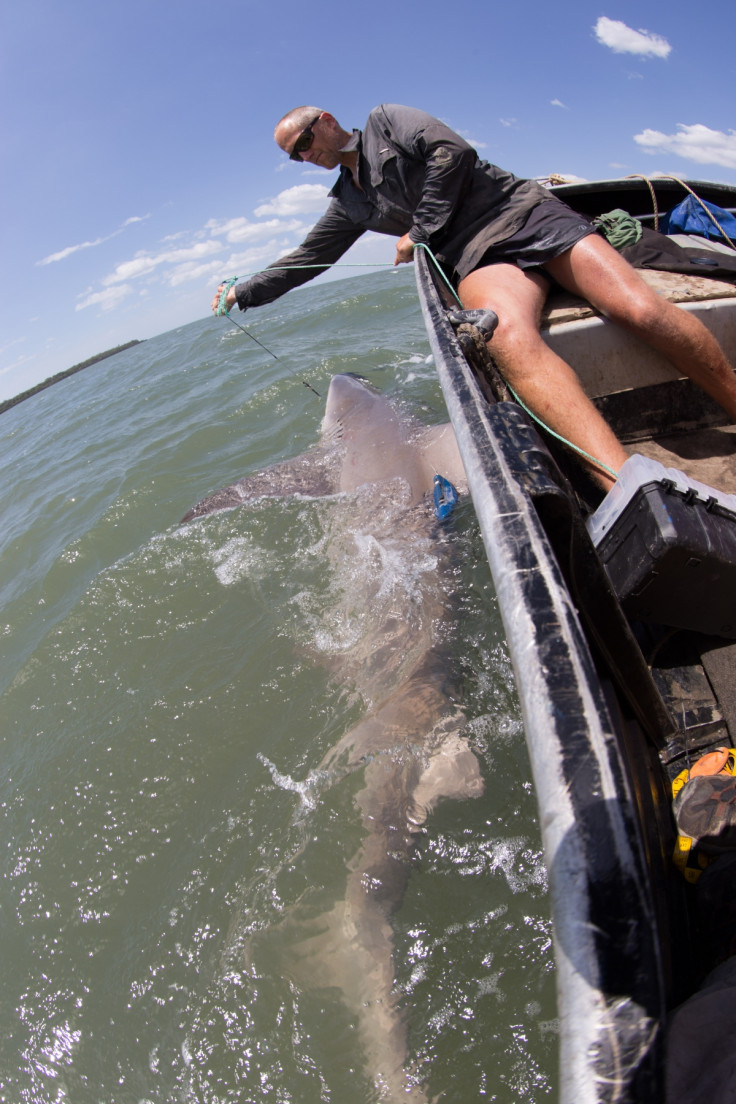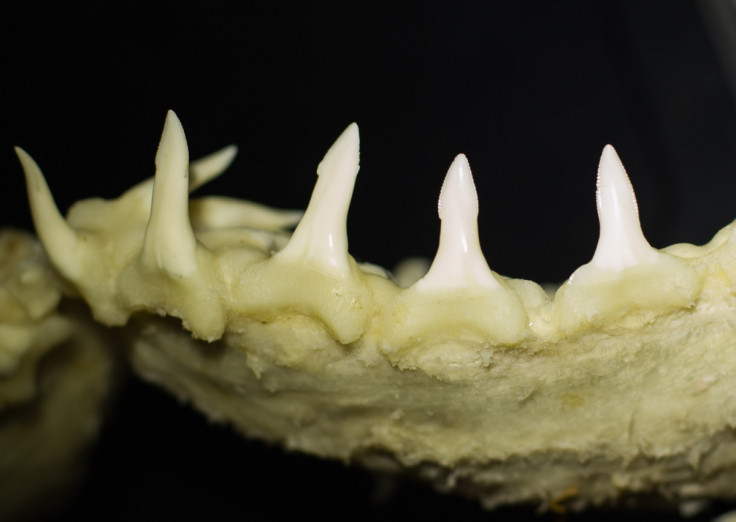Rare and elusive adult speartooth sharks caught for first time in Australia

An adult specimen of an extremely rare and mysterious species of shark has been caught for the first time in Australia. The speartooth sharks were caught and tagged by scientists off the coast of Australia in the remote Cape York.
Measuring almost 8ft (2.5m) in length, the male and female adult sharks were caught by Australia Zoo and CSIRO scientists. Richard Pillans, one of the researchers involved, said: "We've been conducting research into the movement and population status of juvenile speartooth sharks in the Wenlock River since 2006, and due to our long-term research, we now know that juveniles are restricted to a few river systems in the Northern Territory and Queensland.
"But the lack of records of adults is a key gap in our understanding of this species, which is listed as Critically Endangered by the Environment Protection and Biodiversity Conservation (EPBC) Act. We know from catching newborn speartooth shark with open umbilical scars in late October to December that the females are giving birth during this period, with preliminary estimates of total female adult population to be less than 500 sharks."
Speartooth sharks were first discovered in 1982 and since then only juvenile sharks had been observed. They are often confused with bull sharks because of their colouration and riverine habitats. The name comes, unsurprisingly, from their teeth, which are long with spear-like tips.
They are thought to give birth at the mouths of several river systems in northern Australia and juveniles are self-reliant from the moment of birth, spending three to six years there before moving on.

CSIRO researchers began studying the species in 2004 in a bid to improve our understanding of them. The team carried out nine days of intensive sampling and managed to find two adults – a male measuring 2.3m and a female measuring 2.2m. The team said the odds of doing this were almost non-existent.
Finding the two together was a surprise to researchers, who say this may indicate the pupping area where they were found is also a mating area. Scientists will now follow the two sharks for the next two months, after which the satellite tags will detach.
"The tags also collect water temperature and depth, which can be used to reconstruct the movement pathways and provide detailed information on the habitat preferences of this species," Pillans said. "It is hoped that the information obtained from these tags will provide the first data on where adult speartooth sharks live, with this data critical to obtaining a better understanding of threats to this endangered species. We currently have no idea where the adults occur, all we know is that they are found in marine environments somewhere off the northern Australian coast."
© Copyright IBTimes 2025. All rights reserved.






















